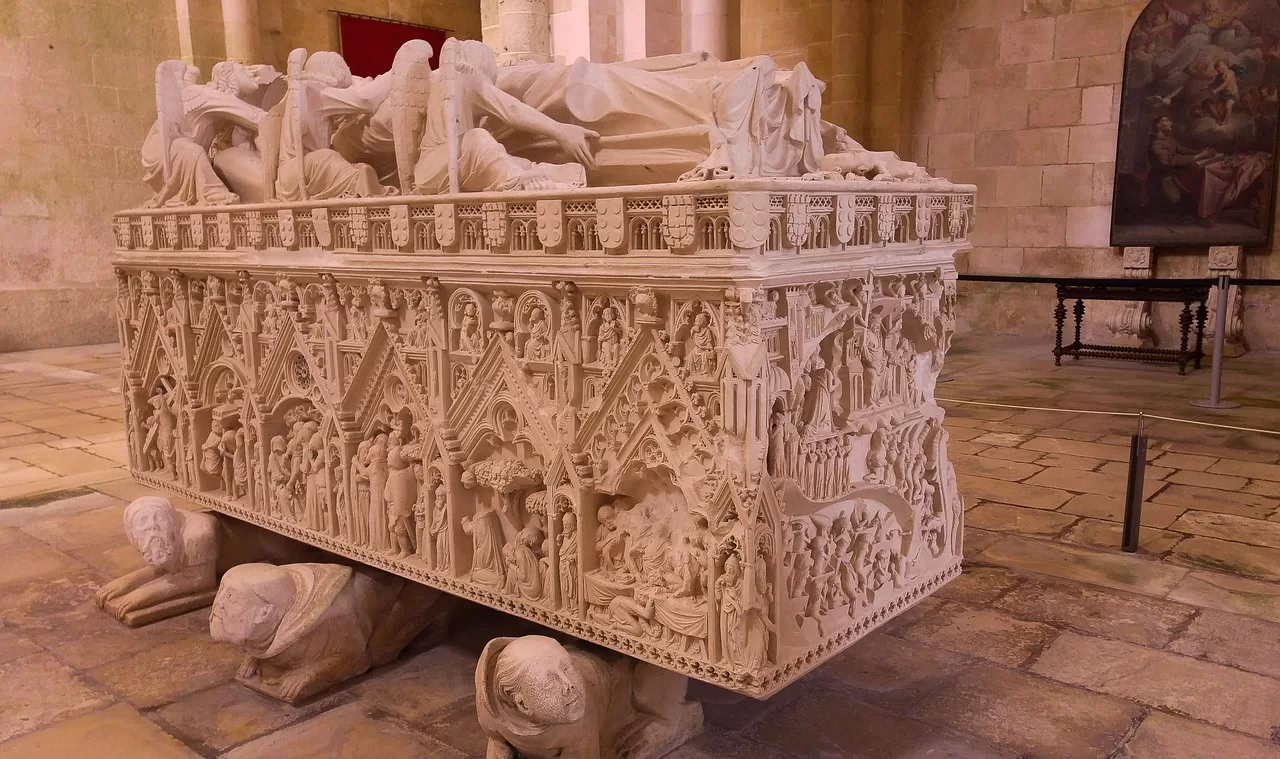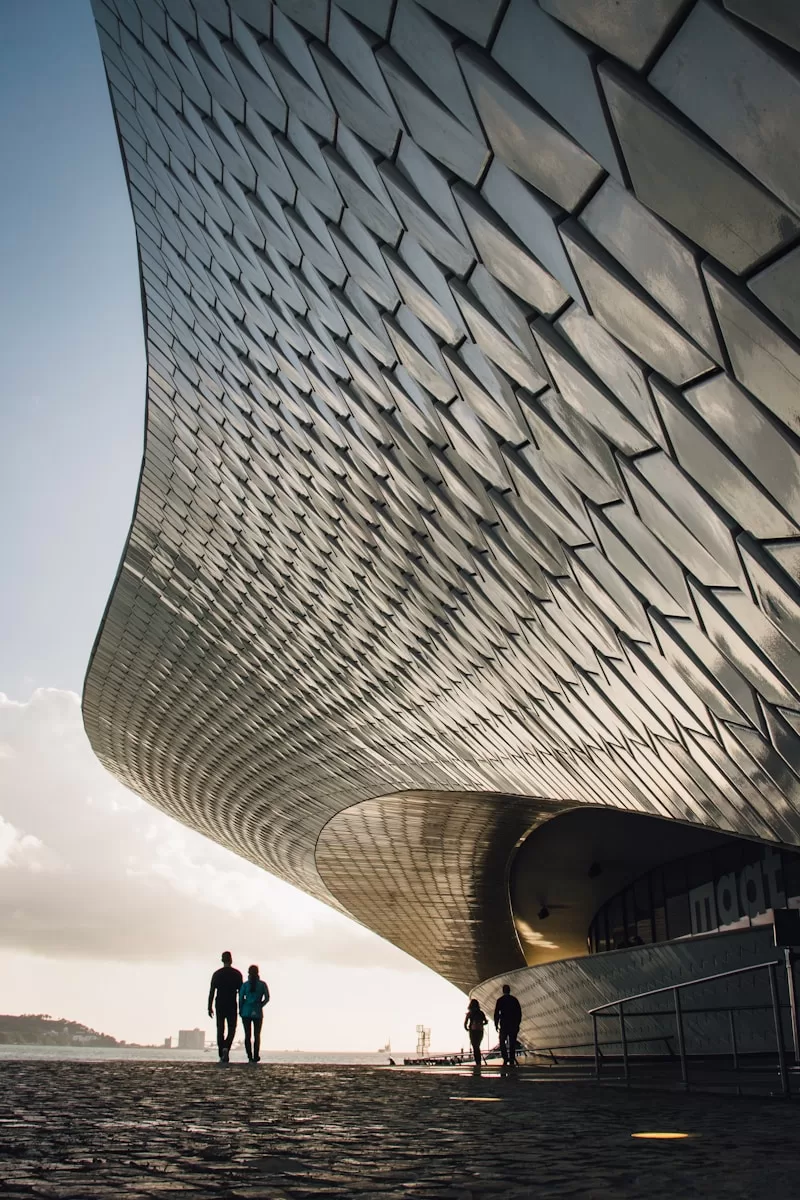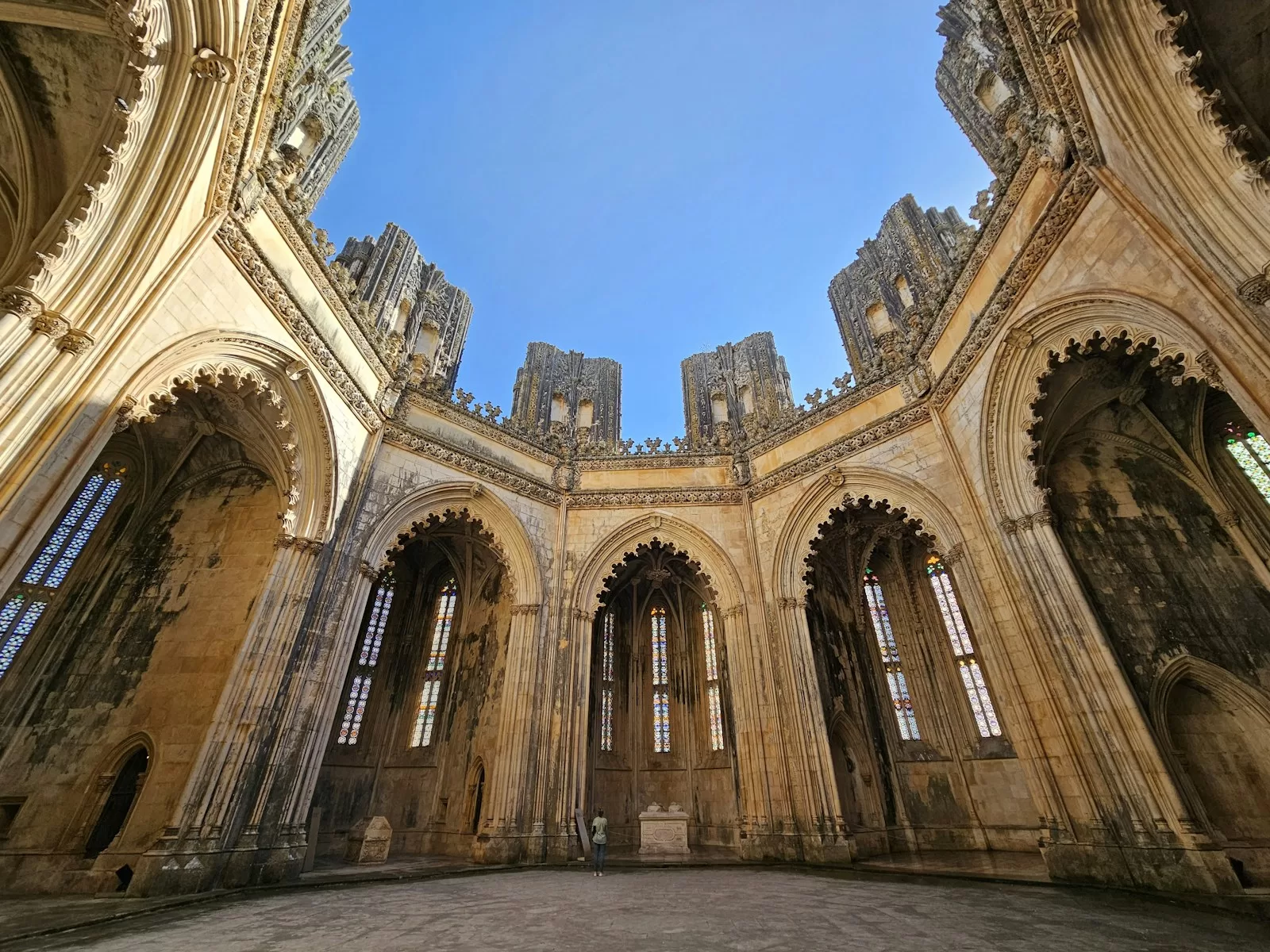Nestled in the serene town of Alcobaça, Portugal, the Alcobaça Monastery is a UNESCO World Heritage Site. The Alcobaça Monastery offers visitors a glimpse into Portugal’s history, architecture, and enduring cultural significance. This 12th-century monastery is a breathtaking symbol of the Portuguese identity. It blends architectural brilliance with stories of royal romance and spirituality. Here’s a closer look at why Alcobaça Monastery is a must-visit landmark in Portugal.
Commissioned in the 12th century by Portugal’s first king, Afonso Henriques, the Alcobaça Monastery was initially built to celebrate the nation’s independence and burgeoning identity. As you approach, the grand stone façade adorned with detailed carvings and towering spires speaks to the artistry of the medieval craftsmen. Inside, the well-preserved architecture unfolds with an inspiring display of
UNESCO World Heritage Alcobaça Monastery in Portugal

Alcobaça Monastery was founded in 1153 under King Afonso Henriques, Portugal’s first king. Constructed in honor of the Cistercian Order, it was a religious and nationalistic symbol of the time. The monastery represented Portugal’s growing strength and independence, newly emerging from the Iberian Christian reconquest of Muslim-held territories. King Afonso Henriques underscored Portugal’s ties to Christian Europe and emphasized his dedication to nurturing a culturally distinct and unified nation. He did this by entrusting the monastery to the Cistercian monks.
Architectural Influence
Alcobaça Monastery is renowned for its architectural design. It combines Gothic and Romanesque styles with a strong Cistercian emphasis on simplicity and contemplation. Built primarily in the Gothic style, it was among the first structures in Portugal to reflect the European architectural trends of the time. Its grand yet austere design reflects the Cistercian values of humility and restraint. It symbolizes spiritual devotion as much as architectural grandeur.
Architectural Highlights

Grand Façade and Entry
The monastery’s facade is arresting, blending Gothic and Baroque elements. Therefore, this is one reason why Alcobaca Portugal gained a UNESCO World Heritage designation. Adorned with intricate stone carvings, the towering facade immediately transports visitors back in time. The central portal and flanking spires draw your eye upward as you approach. Thus symbolizing a spiritual ascension that perfectly aligns with the building’s original monastic purpose.
Interior Marvels
Inside, the main nave is 20 meters high and over 100 meters long, making it one of the most extended Cistercian Gothic structures in the world. The ribbed vaults and tall, slender columns emphasize verticality, amplifying the sense of grandeur. Soft light filters through stained-glass windows, adding a sense of tranquility to the sacred space.
The Cloisters
The monastery’s cloisters, known as the Cloister of Silence, are a place of serenity designed to aid contemplation and introspection. Constructed in the late 13th century, the cloister surrounds a beautifully maintained garden framed by elegant arches. These arches reflect the simplicity of Cistercian ideals. Here, visitors can sit, reflect, and experience the peaceful atmosphere intended for the monks who once lived and prayed in these corridors.
The Tombs of King Pedro I and Inês de Castro

The Tragic Love Story
One of the most poignant aspects of Alcobaça Monastery is its connection to Portugal’s legendary love story between King Pedro I and Inês de Castro. Inês was executed for political reasons, but Pedro’s devotion to her led him to commission two intricately carved Gothic tombs upon his ascension to the throne. The tombs, located within the monastery, face each other. It is a testament to Pedro’s promise that they would reunite on Judgment Day.
Symbolism and Sculptural Details
The tombs of Pedro and Inês are adorned with masterful sculptures depicting scenes from their lives and the final judgment. In Pedro’s tomb, intricate carvings depict saints and the apostles, while Inês’s tomb features floral motifs and angels, highlighting her royal yet tragic legacy. Together, these tombs capture the profound love and loss that haunt Alcobaça today.
Alcobaça Portugal UNESCO World Heritage Recognition

Cultural and Historical Value
In 1989, UNESCO designated Alcobaça Monastery a World Heritage Site, recognizing its architectural and historical significance. The monastery is a testament to medieval European monasticism and symbolizes Portugal’s cultural identity and artistic achievement.
Global Significance
Alcobaça Monastery’s inclusion on the UNESCO list underscores its universal value. It offers future generations insight into Portugal’s medieval period and the cultural exchanges that shaped the country. Its well-preserved structures, rich in history and artistry, make it a vital heritage site that speaks to the world’s collective human experience.
Visitor Experience

The Spiritual Ambiance
Walking through Alcobaça Monastery feels like stepping into another era. The quiet, vast spaces invoke a sense of peace, allowing visitors to pause, reflect, and absorb the ambiance of a building designed for contemplation. The cloisters, with their gentle sunlight and garden views, offer a retreat where one can experience the spiritual calm the monks once cherished.
Immersive Architecture
Visitors can marvel at the monastery’s blend of functionality and artistry, from the robust Gothic structures to the delicate decorative carvings. Each element of Alcobaça Monastery invites visitors to explore and experience Portuguese history firsthand, making it an unforgettable stop on any journey through Portugal.
Atypical Last Thoughts

A visit to Alcobaça Monastery is more than a trip to a historic UNESCO site. It’s an immersion into Portugal’s medieval soul. From the grand Gothic architecture to the tragic love story of Pedro and Inês, Alcobaça offers layers of history, culture, and beauty that captivate every visitor. So, if you find yourself in Portugal, let Alcobaça Monastery reveal the magic of Portuguese heritage. Stories of love, devotion, and enduring beauty are waiting to be explored.
Beyond the historical relics, the cloisters provide a peaceful retreat where tranquility and spirituality coexist. They allow you to immerse yourself in the monastery’s timeless beauty. UNESCO recognized Alcobaça Monastery for its architectural grandeur and its cultural significance as a symbol of Portugal’s heritage.
When you’re in Portugal, visiting Alcobaça Monastery is a chance to step into a story where history, romance, and art converge in one unforgettable experience.
Subscribe
Are you an avid traveler seeking inspiration for your next adventure? Look no further than the Atypical Vagabonds newsletter. By subscribing to our newsletter, you gain access to a treasure trove of travel tips, destination guides, and captivating stories from around the globe. Our expertise in exploring off-the-beaten-path destinations. We offer a refreshing perspective on travel, encouraging you to embrace the unconventional and discover unique experiences. Join the community today and let our wanderlust-inducing content inspire you. Therefore, you can embark on extraordinary journeys. Subscribe to receive their latest updates directly in your inbox and never miss a travel adventure again.
Donations
Love what you’re seeing on Atypical Vagabond? Help us keep the adventures coming! Consider donating through PayPal’s secure payment system. Every contribution goes a long way in fueling our mission to bring you more thrilling content and unforgettable experiences. Join us in shaping the future of travel—donate today!


